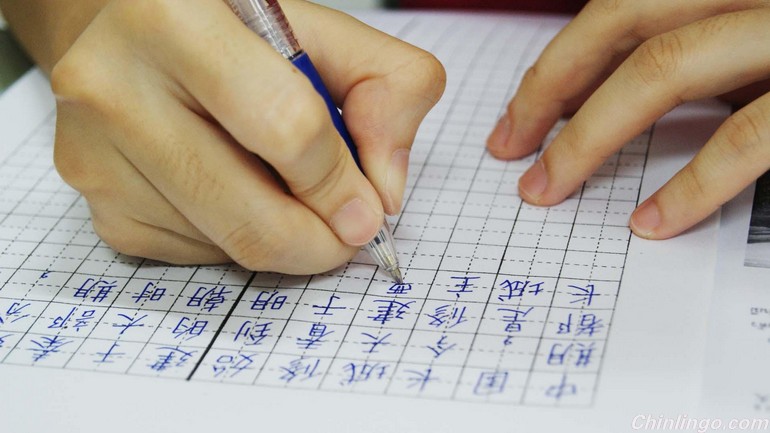
Hand-writing characters is often considered one of the most difficult parts of learning Chinese, even to native speakers. From office Post-It notes to grocery lists, some things are simply inconvenient to type. Maybe you’re a traditionalist interested in the artistry of calligraphy, or perhaps you’ve heard of obscure characters that can only be written and not typed. Regardless of your motivations, here has five tips to help you improve your Chinese handwriting.
1. Practice stroke order
To many beginners in today’s font-filled world, stroke order seems irrelevant. For hand-written Chinese however, stroke order can be the difference between 汉字 and scribbles. Correct stroke order lets you speed up your writing and maintain correct proportions. Eventually, it will keep your writing legible when you learn to write quickly. Brush up on the the basic patterns of stroke order: top to bottom, left to write, horizontal to vertical.
Correct stroke order also lets you look up characters more accurately in dictionaries. Most online or mobile dictionaries that allow users to write characters rely not only on the shape or number of strokes, but the stroke order.
2. Stroke type matters
Unlike in simplified fonts, stroke type in hand-written Chinese is more important to distinguish.
In the image above, the character 大 should be written with three strokes – horizontal, a long vertical slanting to the left, and a short curve starting from intersection. In the example on the right, the writer started the stroke at the bottom and it tapered toward the middle. Try writing 大 in this way, and no dictionary will recognize it, even though the shape is roughly the same. Also, learning the names of strokes allows Chinese speakers to explain how a character is written, without having to actually draw it out.
3. Learn to recognize correct proportions
Incorrect proportions are the most obvious indicator that you’re new to Chinese. Much like stroke order, characters have semi-standard proportions, and the patterns will become more obvious the more time you spend with hand-written Chinese.
In the first two characters in the example above, 们 and 现, the left radical is corrected to have better spacing from the right. For the correction of 来, the top horizontal line of a character should almost always be smaller than the bottom. (An exception occurs if the size of a line denotes meaning, like the difference between 土 “soil” and 士 “scholar.”) For the bottom character, 理,although the left radical should be written “thinner” than the right, it should be the same height.
4. Practice makes perfect
Unfortunately, the main way to improve your handwriting is to write as much as possible. Chinese primary school children practice writing simple characters hundreds of times to cement the foundations of writing. Many teachers recommend teaching written Chinese with a brush, but just using a pen to practice tapering is more than adequate. Find excuses to write in your daily life – hand-write reminders in Chinese, or summaries of articles you read. Consider keeping a hand-written diary in Chinese – not only will it allow you to practice every day, but you can look back to see how you’ve improved!
5. Pick up a few tricks
Finally, there are a few tricks that aren’t necessary for good handwriting, but can make your characters look a bit more beautiful and refined. These techniques are best for Chinese learners who’ve mastered the basics of writing, but want to make their characters look more natural. One user on China Stack Exchange provided these examples:
Try giving your vertical strokes a slight left-leaning angle to make them look a bit nicer.
Slightly exaggerating the “skinny on top, fat on the bottom” rule can produce lovely, but still legible characters.



 闽公网安备 35020302035673号
闽公网安备 35020302035673号
0 responses on "Tips for improving Chinese handwriting"